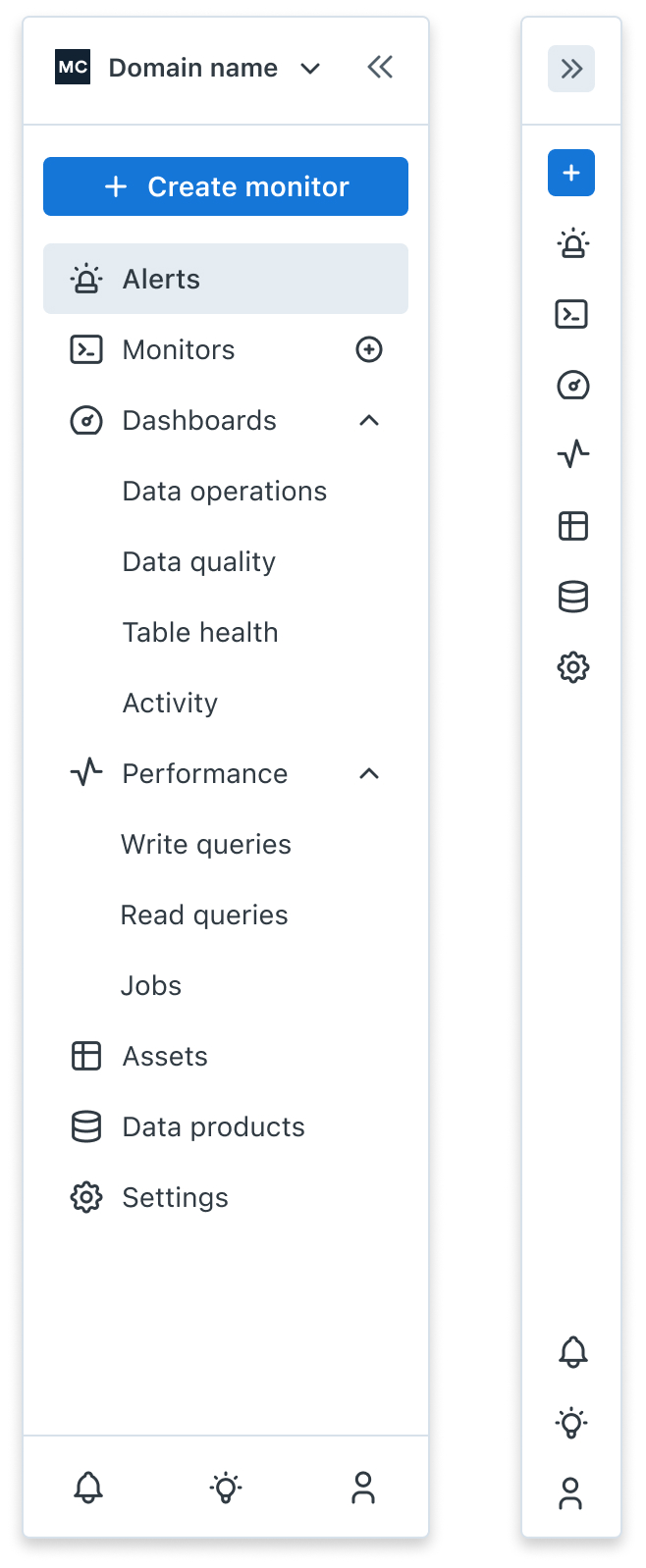Switch your workspace to dark mode for a calmer, more comfortable experience. You can choose your theme by clicking on your user profile and selecting Light, Dark or System option under Theme.
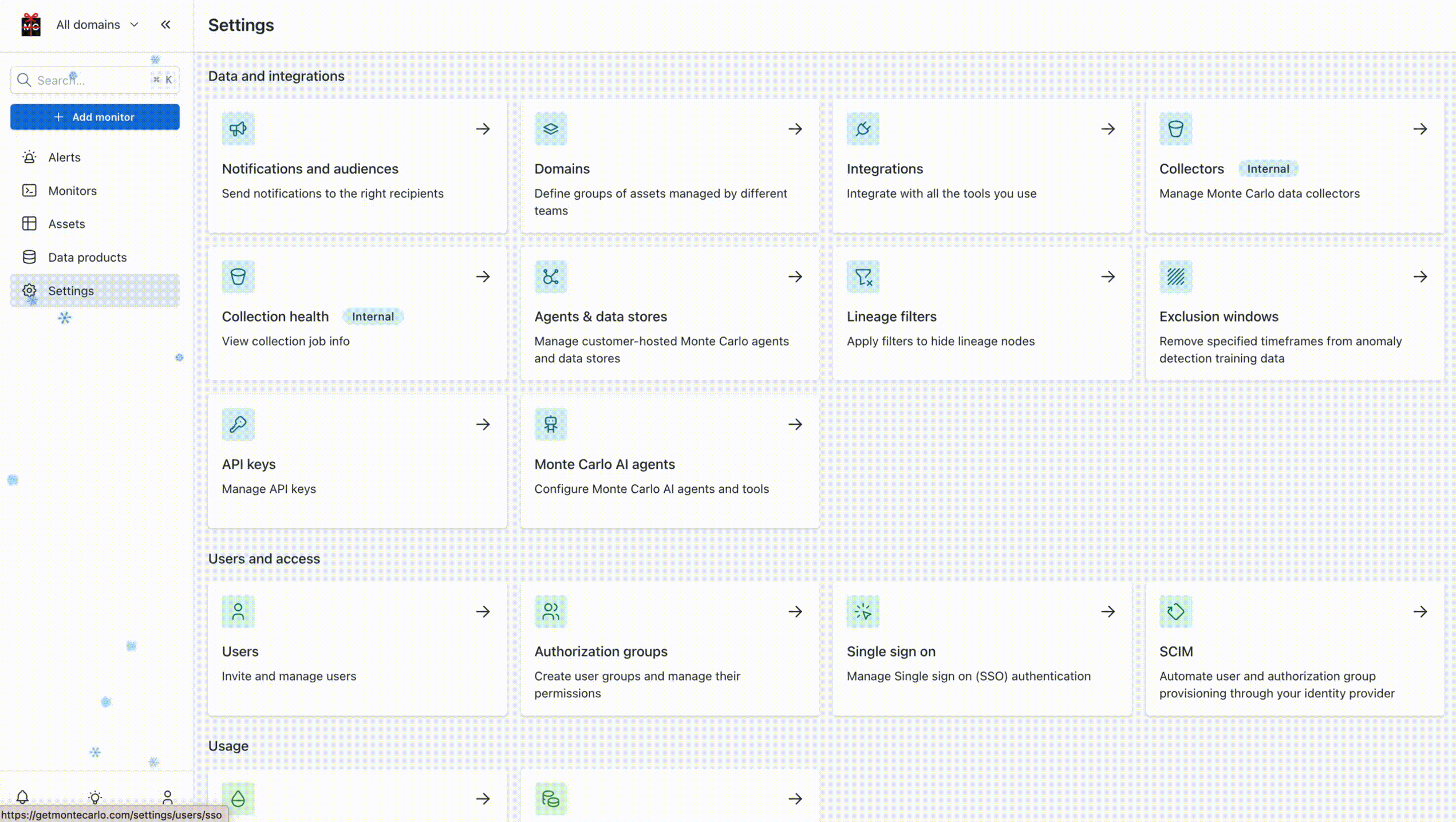
Switch your workspace to dark mode for a calmer, more comfortable experience. You can choose your theme by clicking on your user profile and selecting Light, Dark or System option under Theme.

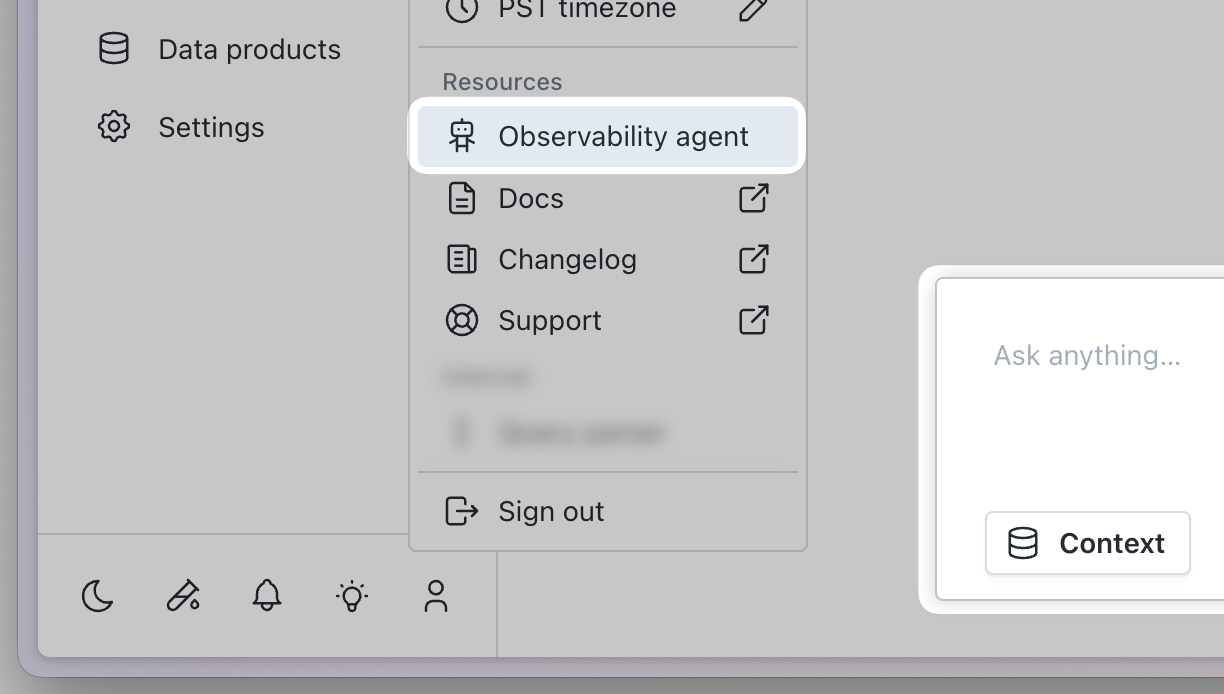
The observability agent is more than just a chatbot - it’s brings the power of the tools in our MCP Server to users out of the box — no API keys, no setup, no configs, no external tools. Just ask.
The observability agent also partners with our support assistant, trained on our public documentation, so you can get answers to product questions directly in Monte Carlo. Learn more about the support assistant.
The observability agent is in public preview. If necessary, both the observability agent and support assistant can be disabled in the AI agents settings page. If AI features were already disabled, the observability agent will be disabled by default.
A number of customers have called out that volume monitoring in Databricks -- specifically when using byte-count -- is alerting too often. Specifically, there are too many alerts for small size decreases related to optimize/vacuum operations on these tables.
We've shipped some adjustments to dramatically reduce these undesirable alerts. The changes should reduce the false positives by about 75%, while only reducing the overall number of byte-count alerts by about 16%. A very targeted improvement!
For many enterprises, attributing the cost of Monte Carlo back to their lines of business is a necessary step. This process, commonly called a "chargeback," comes in 2 flavors:
Two big improvements we've shipped today, that align with #2 above:
monitor_id as a query tag. When a monitor runs, Monte Carlo will pass a query tag containing the monitor_id, so that warehouse consumption can be easily attributed back to a specific monitor. For now, this is limited just to Snowflake & BigQuery.Read more about both of these improvements here.
Note, these improvements are limited to our Enterprise product tier.
In the last few quarters, the ability to select training data has become a widely adopted way that customers tune the ML thresholds in our monitors.
Many power users have noted the challenges of using this feature within segmented Metric Monitors. Specifically, the selections they make would be applied to all segments within the monitor, with no ability to limit it just to a single segment. This made it hard to fine-tune individual segments... a frustrating limitation.
We've now released controls for users to pick if their selections should be applied to all segments or just this segment. We've also released similar functionality for Custom SQL monitors that use variables, as well.
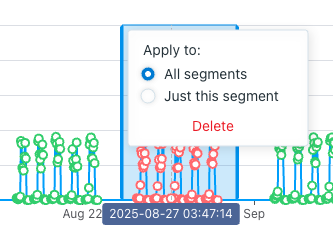
When selecting training data in a Metric Monitor, a user can choose to apply their selection to All segments, or Just this segment.
Several weeks ago, we released a series of changes that tightened the thresholds when monitoring the volume (row count) of a table.
In some cases, these made thresholds more sensitive or noisy than desirable, putting some customers at risk of alert fatigue. Today, we released adjustments to the model to reduce much of that noise. In many cases, this will cause volume thresholds to moderately widen / loosen.
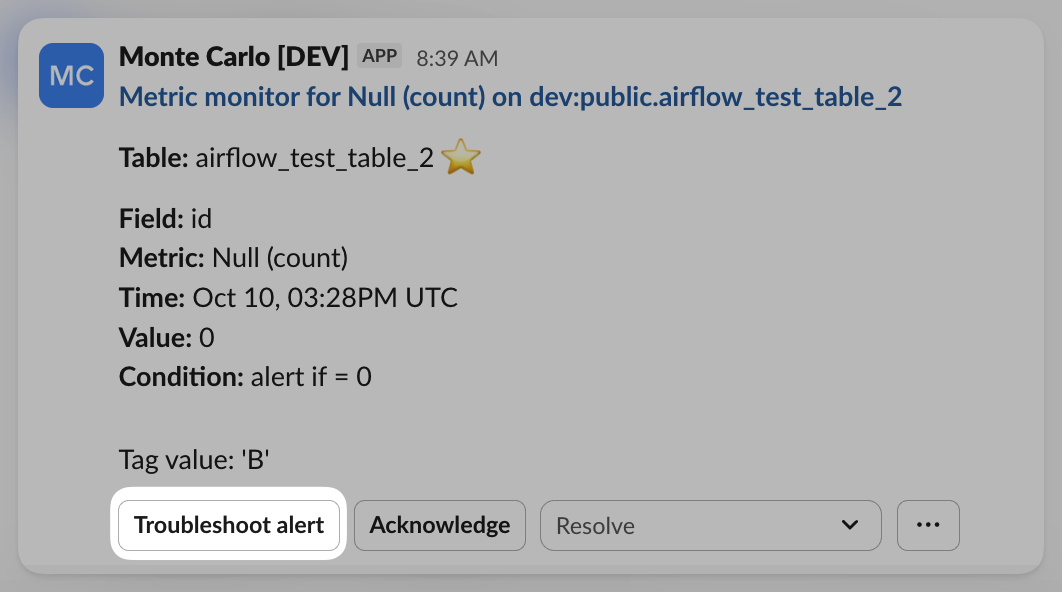
Slack users can now initiate Monte Carlo's Troubleshooting Agent directly from Slack alerts. Upon completion, a troubleshooting summary is provided along with a link to open the findings in Monte Carlo for further investigation!
• One-click troubleshooting: "Troubleshoot alert" button on all Monte Carlo Slack alerts • Thread-based interactions: Agent responses stay organized in the alert thread • Real-time status updates: Clear feedback when troubleshooting starts and completes • Seamless handoff: Summary results in Slack with "Open in Monte Carlo" link for detailed findings
Collaboration just got easier! You can now tag teammates directly in alert comments using @username to bring them into the conversation.
When you mention someone, they’ll receive an email notification with a link to the alert - making it simple to jump in, review context, and take action.
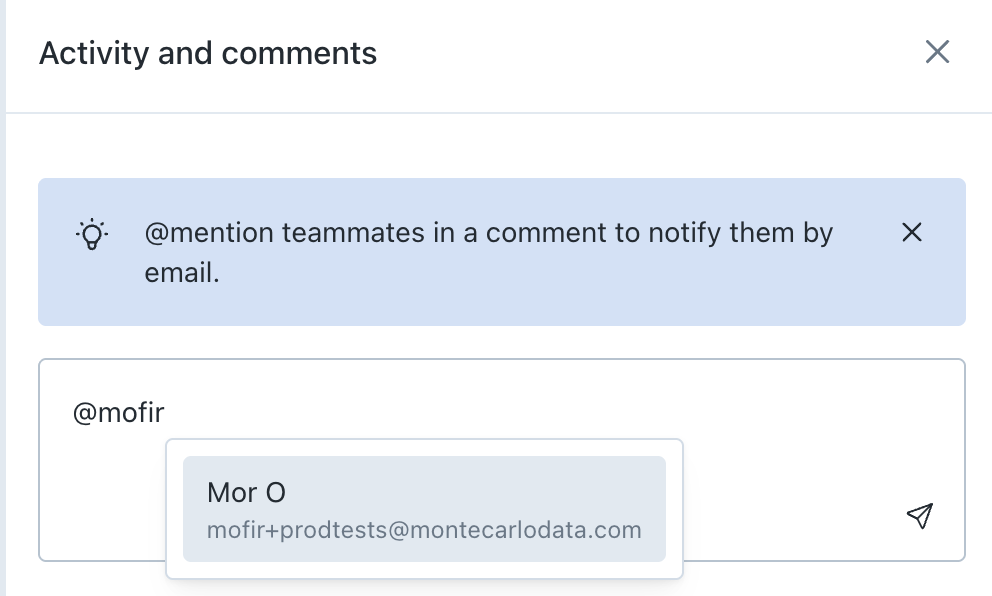
Good news! Navigation in Monte Carlo just got easier. You will have access to all your tabs on a left-side bar in the new experience. Watch a video walk-through
How it works, top to bottom:
